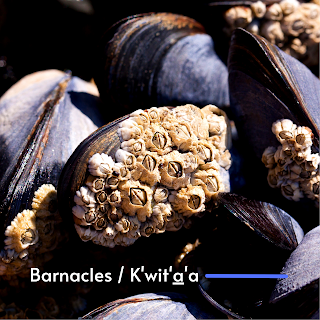They choose their permanent homes as larvae, sticking to hard substrates that will become their permanent homes for the rest of their lives. It has taken us a long time to find how they actually stick or what kind of "glue" they were using.
Remarkably, the barnacle glue sticks to rocks in a similar way to how red cells bind together. Red blood cells bind and clot with a little help from some enzymes.
These work to create long protein fibres that first blind, clot then form a scab. The mechanism barnacles use, right down to the enzyme, is very similar. That's especially interesting as about a billion years separate our evolutionary path from theirs.
So, with the help of their clever enzymes, they can affix to most anything – ship hulls, rocks, and even the skin of whales. If you find them in tidepools, you begin to see their true nature as they open up, their delicate feathery finger-like projections flowing back and forth in the surf.
One of my earliest memories is of playing with them in the tidepools on the north end of Vancouver Island. It was here that I learned their many names. In the Kwak'wala language of the Kwakiutl First Nations of the Pacific Northwest, the word for barnacles is k̕wit̕a̱'a — and if it is a very small barnacle it is called t̕sot̕soma — and the Kwak'wala word for glue is ḵ̕wa̱dayu.




